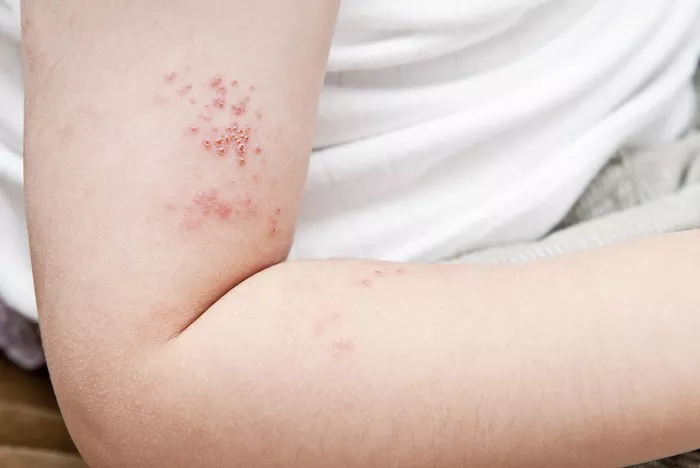Hidradenitis Suppurativa (HS) is a chronic inflammatory skin condition characterized by painful, recurrent abscesses and nodules in areas with apocrine glands, such as the armpits, groin, and buttocks. While HS primarily affects the skin, its impact can extend beyond dermatological concerns, raising questions about potential implications for pregnancy and maternal health. Among the myriad of concerns for expectant mothers, the link between HS and miscarriage is an area of growing interest and importance in both dermatology and obstetrics.
Understanding Hidradenitis Suppurativa:
Before delving into the potential association between HS and miscarriage, it is crucial to grasp the fundamentals of this debilitating skin condition. HS typically manifests during puberty or early adulthood, presenting as painful lesions that often rupture, leading to the formation of sinus tracts and scarring. The exact cause of HS remains elusive, but factors such as genetics, hormonal imbalances, and immune dysfunction are believed to contribute to its development.
Pregnancy and Hidradenitis Suppurativa:
Pregnancy represents a unique physiological state characterized by significant hormonal fluctuations and immune system modifications to support fetal development. For women with HS, pregnancy can lead to varied responses in disease activity. While some women experience improvement in their HS symptoms during pregnancy, others may notice exacerbations or new flare-ups. This variability underscores the complex interplay between hormonal changes and the pathogenesis of HS.
The Link with Miscarriage:
Despite the growing understanding of HS and its impact on pregnancy, studies investigating its association with miscarriage remain limited and inconclusive. Miscarriage, defined as the spontaneous loss of a pregnancy before the 20th week, can result from numerous factors, including genetic abnormalities, maternal health conditions, and environmental influences. While certain chronic inflammatory conditions have been implicated in miscarriage risk, the specific relationship between HS and pregnancy loss remains poorly defined.
A notable study published in the Journal of the American Academy of Dermatology examined the obstetric outcomes of women with HS compared to those without the condition. The researchers found no significant difference in the rates of miscarriage between the two groups, suggesting that HS alone may not be a major risk factor for pregnancy loss. However, it is essential to interpret these findings cautiously, considering the inherent limitations of retrospective studies and the need for further research to validate these conclusions.
Potential Mechanisms:
Despite the lack of definitive evidence linking HS directly to miscarriage, several plausible mechanisms may contribute to adverse pregnancy outcomes in women with this condition. Chronic inflammation, a hallmark feature of HS, has been implicated in various pregnancy complications, including preterm birth and preeclampsia. The systemic inflammatory response characteristic of HS could theoretically disrupt the delicate balance required for successful implantation and gestation, potentially increasing the risk of miscarriage.
Moreover, the psychological impact of HS cannot be overlooked, as the disease often exacts a considerable toll on patients’ mental health and quality of life. The stress and anxiety associated with managing a chronic, painful condition like HS may indirectly influence pregnancy outcomes through neuroendocrine pathways, further highlighting the need for comprehensive, multidisciplinary care for expectant mothers with HS.
Clinical Management and Counseling:
Given the complex nature of HS and its potential implications for pregnancy, a multidisciplinary approach involving dermatologists, obstetricians, and mental health professionals is essential for optimizing maternal and fetal outcomes. Preconception counseling should be offered to women with HS to discuss the potential risks and management strategies tailored to their individual needs.
During pregnancy, close monitoring of HS symptoms and timely interventions are paramount to minimize disease flares and ensure maternal well-being. Topical treatments, antibiotics, and anti-inflammatory medications may be utilized judiciously to control disease activity while minimizing potential fetal risks. Moreover, addressing psychosocial factors and providing adequate support networks can alleviate stress and enhance maternal resilience throughout the pregnancy journey.
Conclusion
While the precise relationship between Hidradenitis Suppurativa and miscarriage remains uncertain, emerging evidence suggests that HS alone may not be a significant risk factor for pregnancy loss. However, the chronic inflammatory nature of HS and its potential impact on maternal health warrant further investigation and clinical vigilance. By adopting a holistic approach encompassing medical, obstetric, and psychological interventions, healthcare providers can optimize outcomes for pregnant women with HS, ensuring a safe and successful pregnancy journey.

























